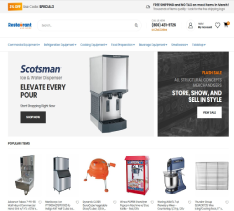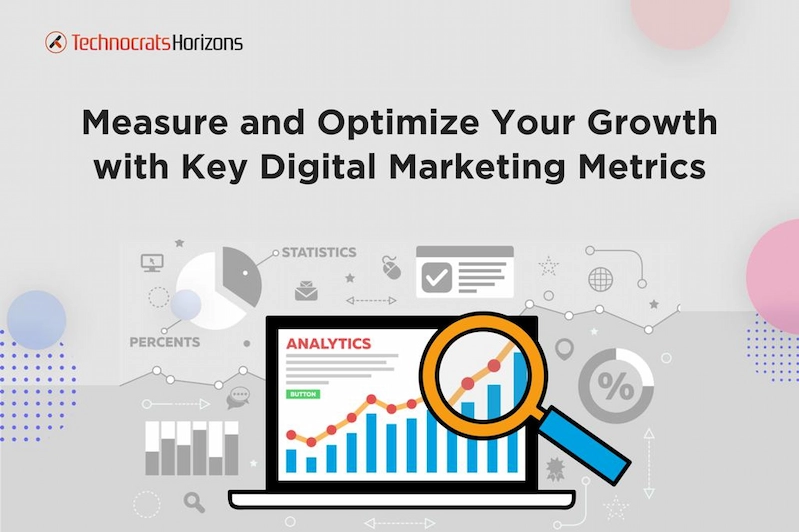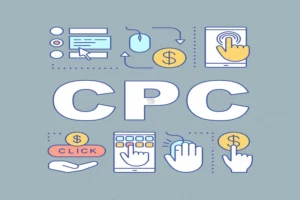Monthly marketing reports play a pivotal role in propelling business success. Although they may seem like a mundane monthly task, these reports hold the key to actionable insights and team alignment. They provide vital information that you use to optimize your digital marketing strategies and achieve higher returns on investment (ROI).
Organizations driven by valuable insights experience significant annual growth rates, while businesses that rely on data are more likely to attract and retain customers.
However, amidst the wealth of available data, navigating through the statistics can be overwhelming. How do we extract essential information without getting lost in the sea of numbers?
This is where defining Key Performance Indicators (KPIs) becomes very important. By identifying and prioritizing the right KPIs, businesses can effectively track the data that truly matters, enabling them to optimize their digital marketing strategies.
In this blog post, we will explore the top 11 digital marketing metrics utilized by successful businesses and marketers.
What Are Digital Marketing Metrics?
Digital marketing metrics are tools used by marketers to monitor, assess, and document progress. These metrics may vary across platforms and encompass a diverse range of indicators. Focus on the most relevant digital marketing metrics for your campaign, even though tracking multiple metrics can be challenging.
There are tens of thousands of additional marketing KPIs that can characterize your efforts, but we have categorized them into 11 groups that we believe are the most helpful for evaluating campaign success.
1. Conversion Rates
Conversion rate is a comprehensive key performance indicator (KPI) that demonstrates the effectiveness of your marketing strategy throughout the customer journey.
It is essential to check conversion rates by device, just like you would for channels. If a particular device is not performing well in terms of conversions, especially if the traffic to that device is increasing, it may be time to reinvest.
Mobile devices are a great example of how device transitions occur, and conversion rates can vary based on the device. This is particularly true for eCommerce and retail, where several paying customers are making purchases on their mobile and tablet devices.
Formula:
Conversion Rate= (Number of people who completed the desired action / Total number of people who started the action) * 100
2. Customer Lifetime Value
Customer lifetime value (CLV) measures the entire revenue a company can expect from a single customer throughout their business relationship. It takes into account the consumer’s purchasing habits, past purchases, purchase amounts, as well as customer acquisition and retention costs.
CLV is significant as it helps businesses foster greater customer loyalty among their existing patrons. To determine CLV, divide the customer value by the typical customer lifetime.
Formula:
Customer lifetime value (CLV) = Average Purchase Value x Average Number of Purchases.
3. ROI
If you are a data-savvy marketer, you will recognize the value of tracking the ROI for all your efforts and actions. The effectiveness of your campaign expenditures depends on your digital marketing ROI. By delving deeper into this all-encompassing metric, you can determine if your investments are paying off.
In this case, a higher ROI is preferable, indicating the efficacy of your campaign expenditures. A healthy ROI enables you to identify and address areas of weakness if your ROI turns out to be low.
Formula:
ROI= (Revenue – Cost) /Total Cost * 100
Want To Boost ROI? Get Expert Help!!
4. Return on Ad Spend
Return on ad spend (ROAS) is a digital marketing KPI that measures the overall income generated for each dollar spent on paid ads. It is calculated by dividing the campaign’s revenue by its expense. While ROI (Return on Investment) and ROAS are sometimes used interchangeably, they have distinct differences.
ROI assesses the success and worthiness of an entire marketing plan, whereas ROAS focuses on the performance of individual ad campaigns. Together, ROI and ROAS provide the marketing team and leadership with a comprehensive understanding of the effectiveness and profitability of their marketing efforts.
Formula:
ROAS= (Campaign’s Revenue / Campaign’s Expense) * 100
5. Churn Rate
The churn rate is the percentage of customers who stop using a product or service within a certain period. Rising churn rates can indicate areas where a company’s products or services need improvement, or it may suggest that the company is losing customers to competitors.
Monitoring churn rates helps brands identify potential issues with their offerings and areas where they should enhance customer loyalty and retention. For example, a 25% churn rate means that a company started with 20,000 clients at the beginning of the year and ended up with 15,000 clients.
Formula:
Churn Rate= (Number of customers lost during a given period / Total number of customers at the beginning of the period) * 100
6. Social Media Reach and Engagement
Your social media plan is essential for sharing information and engaging with current and potential customers.
Monitoring your growth, such as an increase in Twitter followers and Facebook likes, is an excellent way to gauge this KPI. With the built-in tracking and analytics capabilities of social media platforms, monitoring your growth has become simpler.
You can use a Twitter tool to gather important information from your account. Focus on social media platforms that align with your goals for better results.
7. Bounce Rate
The bounce rate refers to the number of people who visit your website, typically on just one page, and then leave without taking any further action. Ideally, your bounce rate should be low, indicating that users are actively exploring for more information on your website.
Conversely, a high bounce rate may indicate areas where your digital marketing strategy needs improvement, such as inadequate landing pages, slow loading times, or irrelevant content. However, note that the bounce rate can vary depending on the page. Therefore, a high bounce rate on a specific page doesn’t necessarily mean that something is wrong.
Users might have found what they were looking for and chosen to leave, or a contact page could have a high bounce rate because visitors call your company after viewing the provided information. By analyzing the bounce rate of specific pages, you can determine if there is an issue or if users are satisfied before they leave.
Facing High Bounce Rate? We're Here to Help!!
8. Organic Search Traffic
This metric helps you determine the proportion of website traffic that originates from organic searches. A healthy flow of organic traffic indicates that your content is effectively serving its purpose by being valuable, timely, and engaging. Key performance indicators (KPIs) assist in identifying the sources of organic traffic, enabling you to make informed decisions and create more SEO-rich content.
For example, Google Analytics 4, soon to be the default monitoring tool, allows you to track organic inquiries, identify the ones leading to website visits, and assess the visibility of your pages in search results.
9. Customer Acquisition Cost
Customer acquisition cost (CAC) examines the total amount spent on sales and marketing to acquire a new client. This includes expenses related to running programs and marketing campaigns, as well as wages, commissions, technology, software, and any overhead costs incurred when a lead becomes a client.
It is crucial to calculate your cost per acquisition for both outbound marketing and digital marketing. This analysis allows you to assess the comprehensiveness and effectiveness of your efforts. You need to choose a specific period, such as a month, quarter, or year, for evaluating this cost before calculating the measure.
By estimating the total costs associated with your outbound and digital marketing initiatives, you can accurately allocate budgets for each campaign and promptly account for new sales.
Formula:
CAC= Total Sales and Marketing Expenses / Total Number of Acquired Customers
10. Cost Per Conversion
If you spend $150 to acquire a customer with a lifetime value of $100, your business will soon face financial difficulties. Even if the lifetime value of a customer is close to the acquisition cost, you are still not turning a profit. Your marketing budget is being wasted.
The marketing expenses are evaluated for the entire campaign to determine the value of the conversions. For example, let’s assume you run a campaign and receive 100 leads but only convert 5 of them. This highlights the importance of precise targeting. If you notice that a particular channel has a wider reach than others, it is crucial to allocate more time and resources to it.
Formula:
CPC= Total Marketing Expenses / Number of Conversions
11. Lead Close Rate
How do you keep track of lead closings? Lead Close Rate is an important digital marketing metric that is often overlooked in favor of leads generated. However, it is crucial to monitor your lead close rate and compare it to the number of leads generated.
This ensures the profitability of your digital marketing campaigns in terms of lead generation. Moreover, this knowledge serves as a safeguard for new digital marketing initiatives. If you notice a sudden influx of new leads but a lower closing rate, it may be necessary to reconsider your targeting strategy.
By monitoring closure rates, you can gain insights into how sales and marketing teams convert leads into sales.
Formula:
Lead Close Rate= (Number of leads closed / Total number of leads generated) * 100
Choosing the Right Digital Marketing Metrics
1. Separate Digital Marketing Metrics and KPIs
To distinguish between metrics and key performance indicators (KPIs), it is crucial to consider what matters most to your business. While any indicator can be used as a measure, it should be ignored if it doesn’t offer insights into advancing your objectives. Select digital marketing KPIs and metrics that are truly beneficial to your goals.
2. Use the Six A’s and SMARTER Approaches
The SMARTER acronym, which stands for Specific, Measurable, Attainable, Relevant, Time-bound, Evaluate, and Reevaluate, provides a set of standards that your marketing KPIs must adhere to.
On the other hand, the Six A’s – Aligned, Attainable, Acute, Accurate, Actionable, and Alive – also serve the same purpose. This approach helps assess the applicability of metrics.
3. Avoid Getting Sucked into Vanity Metrics
Vanity metrics may look impressive on paper but are useless for strategizing future business operations. While they can show progress, they are not connected to anything important. To avoid vanity metrics, maintain objectivity and ensure the marketing metrics you choose to track are accurate. High-reaching email marketing campaigns, likes, and follows may seem thrilling but can sometimes be misleading.
Conclusion
In developing and implementing your digital outreach strategy, it’s important to consider more than just these 11 digital marketing metrics. They are essential to building a successful and long-term digital marketing strategy. Accurately analyzing and measuring these metrics can give you the push in the right direction.
All this looks overwhelming, right? We’re here to help! Our team at Technocrats consists of skilled digital marketing professionals who have the expertise to assess your online achievements. Contact us today to develop a digital marketing strategy for your business.
Need Help With Digital Marketing? Choose Us!!
Looking for a boost in sales and growth?
Book a free consultation and our team will guide you on how we can improve your digital presence and achieve better ROI.











 Request a
Request a



























